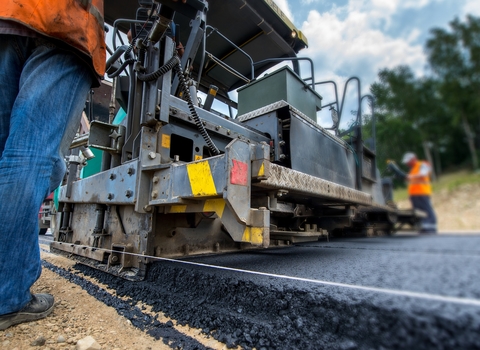With climate change posing a great threat to our wildlife and over a quarter of UK greenhouse gas emissions coming from the transport sector, The Wildlife Trusts believe we need to see sustainable transport solutions that support the creation and restoration of wildlife habitats.
Whilst we recognise some road development is essential, these schemes should be well designed and managed to avoid damaging and fragmenting important places for nature and to provide corridors for wildlife.
Road development and wildlife
Hundreds of schemes to enhance, renew and improve the strategic road network are currently planned by the Government - at an estimated cost of £27.4 billion during the current investment period 2020-2025. Some of this work is undeniably essential and will help to prevent both deaths and serious injuries on our roads. However, many of these schemes are designed to reduce congestion and/or open up growth opportunities despite evidence suggesting road building is ineffective in delivering these goals, instead leading to more traffic and increased greenhouse gas emissions contributing to climate change (see CPRE's report: The end of the road?).
In addition, many of these developments will result in loss of wildlife and the places our wildlife lives, as well as increased disturbance from noise and badly designed road lighting. Climate change, exacerbated by transport emissions also presents the biggest long-term threat to the survival of our wildlife.
The Government, in order to stay true to its own policies and environmental commitments, and address the ecological and climate emergencies, should consider the impact on the natural world of road development. The Wildlife Trusts want to see roads considered as part of a sustainable transport strategy for England, which complies with environment and climate legislation. As a priority this should include mechanisms which: reduce the need to travel; minimise dependency on private vehicles; and promote safe and connected active travel routes.
Environmentally sensitive maintenance and improvement of the current road network should be prioritised over new road schemes, with all development planned and delivered with reference to networks for nature's recovery to avoid impacts on important sites and corridors for nature. They should also use the opportunity to deliver a 'net gain' for wildlife - that is the principle that development leaves the place better for nature than it was before e.g. by creating a wildlife corridor so that it can travel in between otherwise unfriendly environments.
Campaigns - current and past
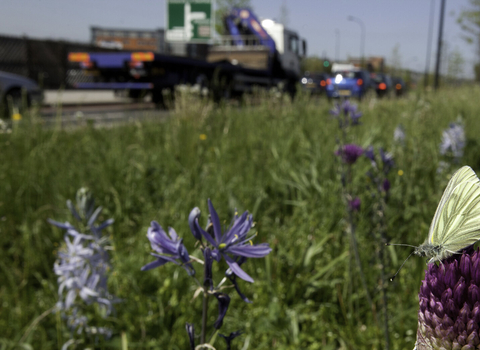
Wild flower planting in urban setting by Paul Hobson
Road Review in Wales
Welsh Government has recognised that business as usual is not an option when it comes to building roads across Wales - and that the climate and nature emergencies must be immediately addressed. Wildlife Trusts Wales has long fought damaging road schemes and welcome this progressive policy, which sees many new routes scrapped including the 'Red Route' in Flintshire that North Wales Wildlife Trust actively campaigned against.
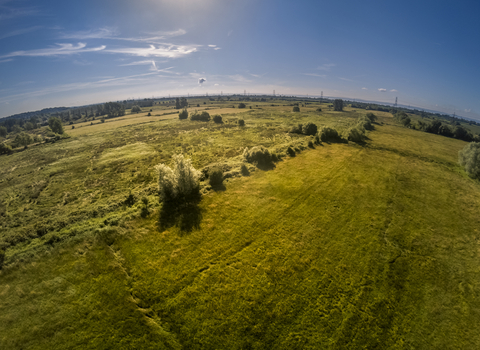
Credit: Neil Aldridge
Gwent Levels and M4 Extension
The Welsh Government proposed building a new 14-mile six lane extension to the M4 across the Gwent Levels, the Welsh equivalent of the Amazon rainforest for its wildlife-richness. Thanks to Wildlife Trust campaigners and others, we were able to save it from destruction.
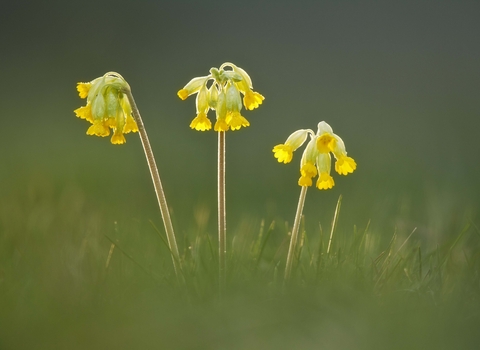
©Guy Edwardes/2020VISION
Lower Thames Crossing
Essex Wildlife Trust has fundamentally opposed the plans for a Lower Thames Crossing. Help us raise awareness of the potential damage to wildlife and register your views before 24 February.
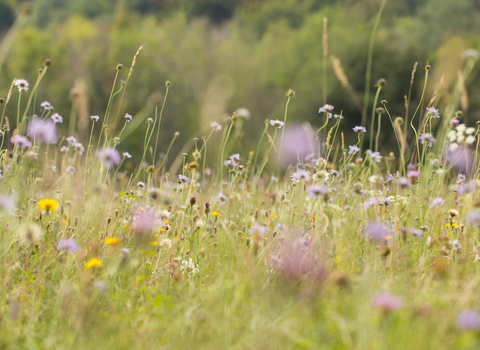
James Adler
The Norwich Western Link
In January 2019, four options were shortlisted by Norfolk County Council (NCC) to link the end of the current Northern Distributor Road (NDR) now called Broadland Northway, on the A1067 with the A47 near to Easton – the proposed ‘Norwich Western Link’ (NWL).
Taking action
Road Investment Strategies (RIS) are set every five years. The Wildlife Trusts worked collectively with other environmental and sustainable transport organisations in the run up to RIS1 (2015-2020) and RIS2 (2020-2025) to secure a green retrofit programme for the existing road network and to call on Government to consider future road needs in the context of an integrated transport network, designed in a way that protects the environment as well as connecting communities (see our two reports "Better not Bigger" and "Rising to the Challenge"). RIS3 (2025-2030) will be published in 2025. The Wildlife Trusts have been engaging with the Department for Transport, National Highways and other key stakeholders to influence the environmental standards and performance of the future road strategy. In addition, we have worked with National Highways to inform its Environmental Sustainability Strategy and will call on Government to ensure this underpins future plans and decisions on road building.
As new schemes are revealed, The Wildlife Trusts will continue to identify the most damaging proposals and strive to protect nature by responding to consultations where available, and by campaigning against national infrastructure developments in the most destructive situations.

